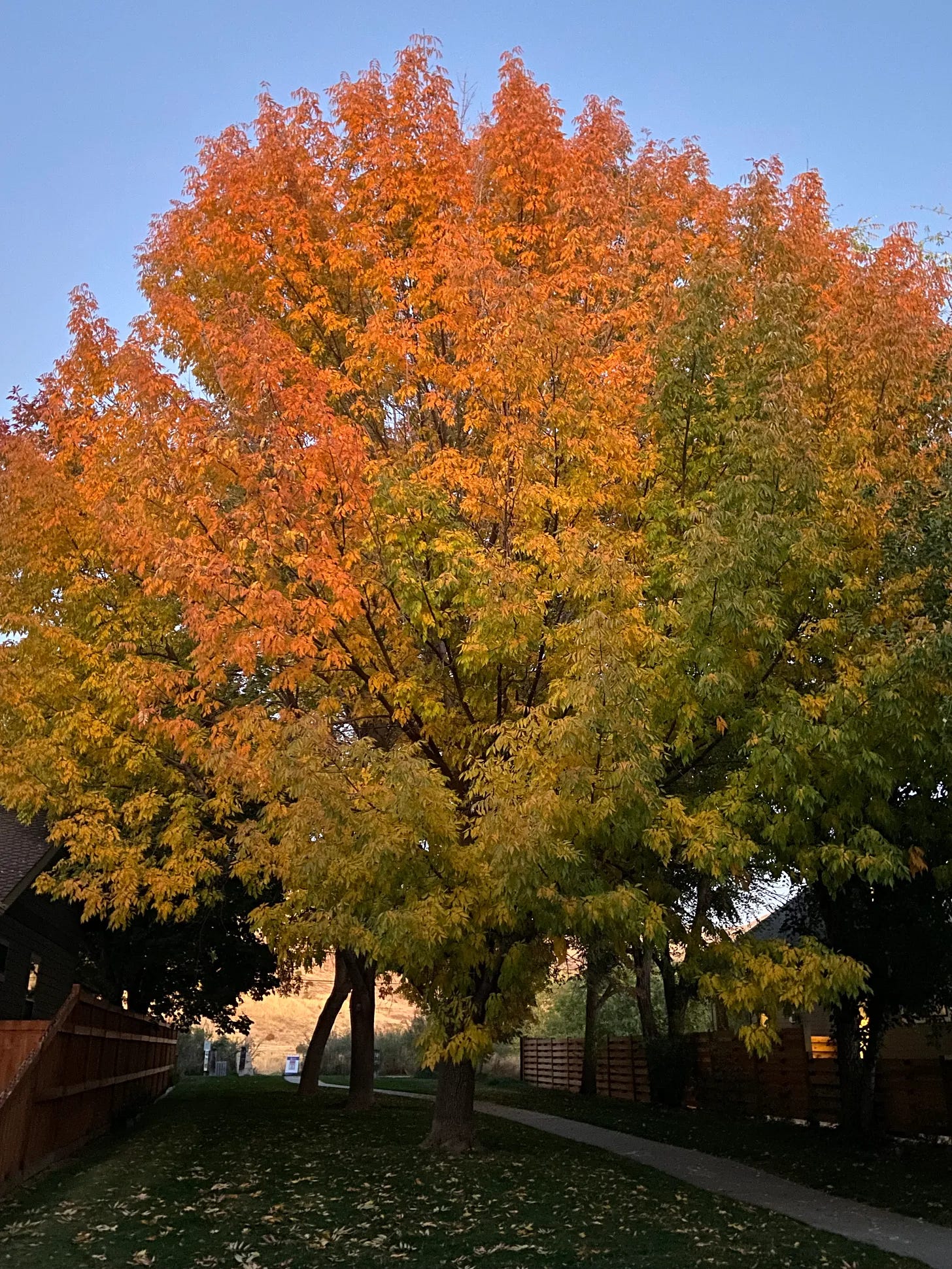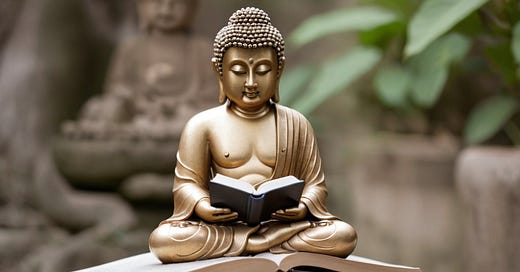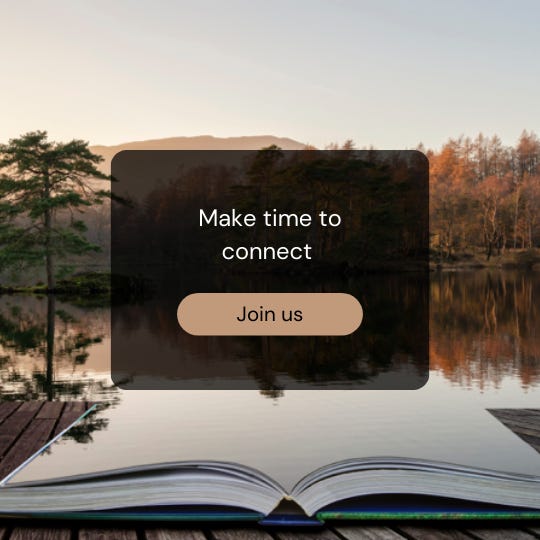Welcome to the “Discovering Mindful Writers Q&A”. Each month, a guest writer answers the same seven questions about their writing life. When I came up with the idea for this series last year, I had no idea that it would prove so popular! It has been great to connect with so many new people both through those who appear in the interview and in the comments that their answers prompt. The schedule is full until the autumn now but do get in touch if you’re interested in answering these questions later in the year. I answered them myself recently and it was a very interesting exercise to answer my own questions!
This month I’m delighted to welcome
— an American Lit professor, mother of two teens, and attendant of two cats. She writes The Hallelujah Book & Hope Letter where once a month she lifts luminous lines from companionable books, once a month she looks for signs of hope in the world, and every few months she hosts a unique community writing event. In a culture with little time for the humanities, she offers a literature professor’s notes on hope.I hope you enjoy finding out more about her mindful writing journey. I love what she says about getting out of our own way to allow spaciousness in and this has been a big part of my development of my writing practice. How about you?
With love,
What does mindful writing mean to you?
As others have noted in this series, the word “mindful” feels a little gangly and hard to love. But the thing it describes is very lovable. To me, “mindful writing” gives a name to what I’ve found myself doing on Substack by accident. Like many others (not necessarily in this interview series!), I expected to write transactionally on this platform, rewarding readers for their time by giving them something predictable and valuable. But no bells of joy rang for me as I drafted transactional ideas into my notebook.
More times than I can count, I’ve sat down to write one post only to let myself follow an inclination toward another. The outcome has been what Jon Kabat-Zinn describes in the first chapter of Wherever You Go, There You Are (1994): “Since humans all have the capacity for “pure awareness,” writes Kabat-Zinn, “there is nothing to ‘get’ here, except perhaps out of our own way, so that easy access to the spaciousness of awareness emerges on its own”.
“Spaciousness” for me means getting out of my own way, letting posts “emerge” despite my intentions. Last October, for example, my plans for posts were feeling forced and laborious when I looked around my neighborhood and saw a bright ash tree in full color. The tree and the light 12-line poem I wrote about it became the emotional center of a roundup of recent posts and Notes I had read and admired. It turned out that I needed to take a break from pithy posts about authors and books to check in with my community and lift others the way that ash tree and some brief wordplay lifted me. For a time, “October Comforts: A pocketful of sweets” was one of my more popular posts.
And so, week after week, I made my newsletter a place to stretch from small intentions into the wide miraculous. To shape words with joy, reverence, and compassion is, I think, miraculous.

How does a mindful writing practice fit into your wider mindfulness journey?
In the 1980s, as I was finishing high school, I suddenly started hearing a phrase, “the way of the heart.” It was used as a theme for retreats and reflections. It meant becoming silent like the ancient desert mystics in order to learn the wishes of the heart, which were not as noisy as the wishes of the head.
While I had no Buddhist vocabulary for my journey in the ‘80s, I would say I was primed for mindfulness early by learning that a certain kind of wisdom arises from silent listening, and that a pause from conventional busy-ness was good for the soul.
In the early 2020s, I came across this book at last, The Way of the Heart by the Dutch priest Henri Nouwen. At the very time that I was developing a writing practice rooted in silent, heartful listening at my newsletter, so Nouwen came back after nearly forty years as if to reassure me that intuition and feeling had a great deal to say; I could trust them with their own forum, as the Harvard and Yale professor of pastoral psychology and theology had trusted his intuition and feeling, to the benefit of countless others who survived him.
“You are the beloved,” was another of Nouwen’s core messages. In my wider journey — call it mindfulness or “heartfulness” (as Maia Duerr suggested last spring in this series) — he is one of my role models. He straddled the worlds of academic knowledge and the clear, powerful expression of love. I am still catching my stride, but I know who my teachers are.
What do you write? Essays, poetry, fiction, plays?
At The Hallelujah Book & Hope Letter, I write essays about books and hope, or everyday life and hope. Examples:
The German poet Friedrich Schiller wrote the “Ode to Joy” under the influence of new friendship and financial security — for the first time in his adult life.
The first female columnist in America weathered a dark time before she found literary stardom and a home of her own.
Not long after the 2024 election, I took the kids to Washington, D.C., where I was captivated by everyday kindness and dignity: “Love among the Monuments.”
Sometimes I write open invitations for anyone who wants to co-write on a topic. The Hope Library is the latest.
I’m also an academic scholar publishing on a variety of topics and periods in American literature.
What drives you to write?
Love. The miraculous. A radiant closing line. The call of Hallelujah in the blood. And all who grok and capisce and read until the credits roll.
What stops you from writing?
Cats on the keyboard.
The need to be everywhere, all at once. The timer going off on the oven. The public library about to close and my books overdue. Class starting in an hour, or a meeting in five minutes.
Dull digital amusements.
Fatigue.
There are also topics that I don’t delve into, but I think that’s because I don’t see a need to be that kind of writer right now. If my inner child is barricading my Great Work from getting out, so far, I haven’t got wind of the interference.
What do you hope* to achieve with your writing?
Answer #1: Love, mostly. World peace. It probably won’t happen in my lifetime, so I’ll just chip away in my little sphere. I say this lightly, but really, what else is there?
Of course, I’m curious about what there is in me that wants to be written. But that’s just curiosity, which is a smaller thing than hope.
I hope love wins. I’m a writer and teacher and mom, so that’s the field I have to work with. Evil is having a moment. It has plenty of moments. But love is going to win.
We have Beethoven and Maya Angelou and Jane Goodall. So I’ll do what I can for the team. It takes all of us doing a little bit each for the win.
* Answer #2: Back in August in this series, Justyna Cyrankiewicz, offered a quotation from a Buddhist monk who preferred the word “aspire” to “hope.” For him, an aspiration carried less attachment and therefore was less likely to interfere with a calm state of mind. “Hope,” for Ajahn Vajiro, “makes and leaves a hole.” So some folks in this series have answered, “What do you aspire to achieve with your writing?” But I changed the question back to hope. That really is the right word for me. Hope is rooted deeper and lasts longer than aspiration. It belongs to the cardinal virtues.
Still, the question about whether “hope” belongs on a mindfulness questionnaire is a very good one. Martha Beck in The Way of Integrity agrees with Vajiro. She describes her troubled relationship with “hope” (and disappointment), which led her also to see hope as a denial of the present moment.
Nonetheless, knowing this, I recently renamed my publication The Hallelujah Book & Hope Letter because experience has led me to a different understanding of hope than Beck’s and Vajiro’s. In my experience, it’s not hope that leaves a hole; it’s the force of attachment to a fixed idea, mistakenly called hope. The two are not even related.
A fixed idea is something we grasp to death. It brings feelings of fear, denial of the present, and desperation. It directs our attention to the future, ignoring present alarms. It shows one bright picture of the future and plants the idea in our heads: You must have this. You will not be happy until you have this. Anything less than this would be unjust. Keep your eye on this thing. It is the only thing for you.
Hope, on the other hand, alights in the present like a fairy godmother, always more kindly than anything we expected. It brings feelings of lightness and even joy in the midst of hardship. (Preposterous, but true!) It is present-oriented, offering us chicken soup and hot water bottles and massages right now when we need them. It offers pictures of bright futures (plural) it knows are possible for us without promising that anything will be easy or assured. The only thing we know is that, with hope available to us, we might be able to meet hardship when it comes again.
Hope is not an attachment, but a fixed idea is. Emily Dickinson understood Hope this way. She called it “sweetest - in the Gale,” as light as a bird “That kept so many warm.” Unlike the fixed idea, which saps our freedom and strength, Hope “never … asked a crumb - of me.” With Emily Dickinson’s poem in mind, I placed Hope on the name of my newsletter and put it back in this question.
To go back to my first answer to this question: “I hope love wins” — I would not replace hope with aspiration. (I aspire for love to win? No. Not bold enough.) Hope is braver, broader, maybe even beyond practical reach — but that’s okay. The point of Hope is not to get there in the future, but to be inspired and uplifted right now.
Dickinson gets it:
“Hope” is the thing with feathers -
That perches in the soul -
And sings the tune without the words -
And never stops - at all -
And sweetest - in the Gale - is heard -
And sore must be the storm -
That could abash the little Bird
That kept so many warm -
I’ve heard it in the chillest land -
And on the strangest Sea -
Yet - never - in Extremity,
It asked a crumb - of me.
Yes, sign me up for Team Hope.
How do you write? Are you a planner or do you just start writing from an idea and let it lead you?
All the above!
I love the security of a good plan, plus a back-up plan or two. Then again, I also enjoy the leap from Plan A to Plan B. And if a brand new idea arrives the morning I’m scheduled to publish, I stop the presses and write the new thing with relief that my best idea arrived just in time —
Like you, dear reader. Thank you for hanging in there ‘til the credits roll, just in time.
Thanks so much for your time and sharing your insights and inspirations, Tara.
Next month’s guest is
who writes Incurably Human, which is all about the ups, downs, and in-betweens of being human. She also write 100 Poems where she shares her own poetry and invites you to share yours.Read previous interviews in the series here.
Thank you for reading The Mindful Writer. If you enjoy my posts and would like to commit to a slower, more mindful writing practice, please consider becoming a supporter for only £5 a month. You’ll get a Mindful Writing Ebook, monthly Zoom Mindful Writing Marathons, and monthly in-depth “The Writing Sanctuary” posts that can help you connect more deeply to yourself, your craft, our human family and the world we live in.
Or you can buy me a cup of tea to say thanks for the posts!









A fabulous interview. I love Tara's style. Beethoven and Maya Angelou and Jane Goodall are in good company!
Thank you, Amanda, for the great questions, and for others earlier in the series whose thoughts challenged and illuminated mine. 🙏🏼